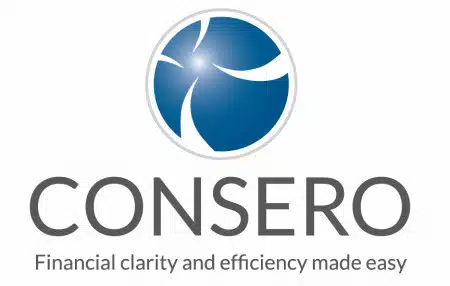Your objective is growth: steady, sustainable and accelerating.
Can your back office financial operations support this growth without falling apart and adding non-scalable costs?
Consider what happens in most small and midsize businesses when they start to push up against the limits of QuickBooks and Microsoft Excel. As particular processes become unmanageable, they invest in specialized point solutions to ease the current bottleneck: a customer relationship management (CRM) system to track opportunities and clients, for example; perhaps a purchasing database to help manage vendors or a time entry tool to track hours.
By and large, these solutions do the job they’re intended to do, but their limitations soon become apparent. They don’t talk to each other, so data has to be transferred manually between systems. The service firm now finds that billable hours are tracked in the time system, but salary information and other costs associated with its people are recorded in the accounting system. So now if managers want to find how much it cost to complete a given project, they have to haul data out of both systems (and perhaps others) and assemble and format it. How many hours did each person spend on the project? What was their billable rate? Were profitability goals met at the department, project and even employee level? Finding the answers can be an exhausting process.
Each manual entry point for the data is a bottleneck in your work flow, a source of staffing cost and inefficiency, and an opportunity for errors. The name of the company may have been typed slightly differently in the accounting system than it was in the CRM, resulting in confusion when looking between systems to calculate commissions. Or let’s say a customer changes their address — somebody has to remember to update the info in the CRM system and the billing and accounting systems.
As the company grows, the problems and costs grow too, and in linear or even exponential fashion, resulting in a classic non-scalable-growth model: If you do two million dollars’ worth of business (for example), you need one back-office person for a particular process; if you do $4 million you need two people or more, $6 million you need four or five. It’s a replication mentality.
Is there any way around this math? There is, for companies that decide to stop replicating and start integrating.
Just a few years ago, migrating to a truly integrated, growth-ready system meant a major upfront investment — often in the high five- or even six-figure range — in hardware, licensing and technology setup.
Today, though, the explosion of software-as-a-service (SaaS) options has placed sophisticated enterprise systems well within the reach of many SMBs, enabling them to build a rock solid foundation for growth without the sticker shock of a server-based model. If you haven’t investigated this market recently you might be surprised at the depth of functionality SaaS finance technologies can offer. In particular, take a good look at:
* Enterprise resource planning systems. These transaction-crunching systems are the foundation of integrated, companywide financial information, with functionality ranging from a general ledger, to purchasing, to order processing, to revenue management, to business intelligence. SaaS vendors are fighting tooth and nail for the SMB space, which is very good news indeed for smaller businesses. According to the 2011 ERP Report from software analyst firm Panorama Consulting Group, “the scope of SaaS functionality has broadened significantly, and companies have responded in kind by increasing their adoption rates of SaaS offerings.” Nearly one in five survey respondents reported using SaaS for their ERP solutions in 2010 — a massive increase over the previous year’s 6 percent. Panorama predicts heavy adoption of software-as-a-service models by SMBs in the next twelve months: “Assuming SMBs and start-ups lead us out of the economic doldrums as they have in past recessions, they will look to [SaaS] enterprise software to provide their business foundations for growth.”
* Document management and workflow solutions. When nearly every step in a process has to be communicated and tracked via paper or email exchanges, as traditionally happens in the invoicing process for example, it’s inevitable that some information is going to be invisible. You’ll always have questions like: Where is the document in the process? Has it gone to the client or is it still in the approval process?
SaaS document management tools deliver the visibility that email lacks. With the documents saved to a central location and available online, authorized users can easily find the information they need from anywhere via a Web browser. Automated workflow notifications ensure that processes run smoothly, with minimum delays and interruptions. SaaS document management also eliminates the need to save important files to a local hard drive or server and do constant backups.
Integration and scalability are two faces of the same coin, and the beauty of SaaS model is that it helps you ensure that both sides are polished and efficient, with just a moderate investment of time and money. It’s a tremendous opportunity for SMBs to lay the groundwork for growth well into the future. So … what are you waiting for?








